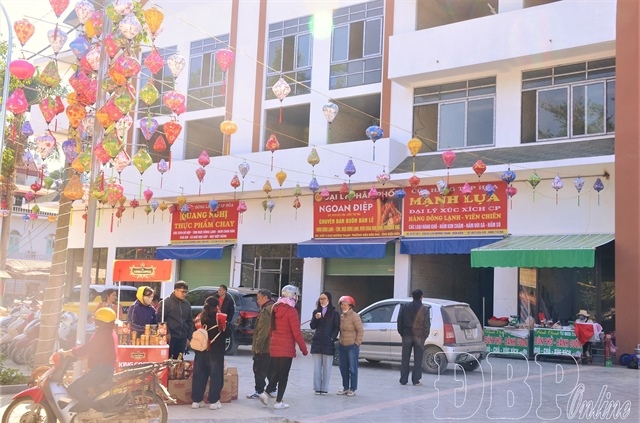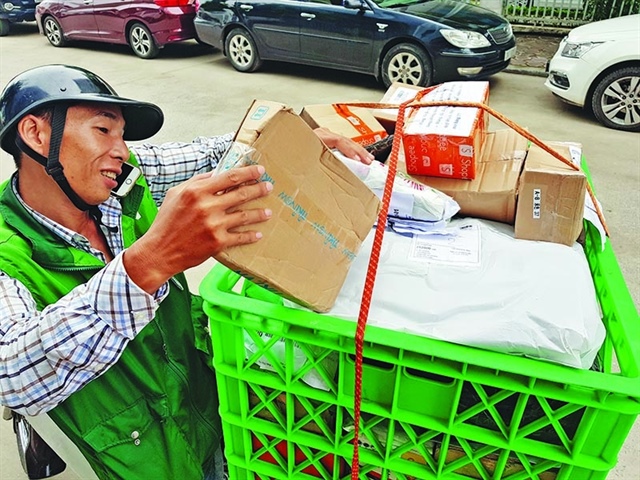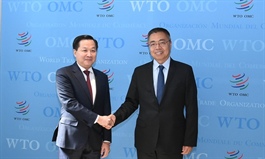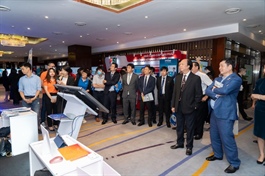S&P raises Viet Nam long-term sovereign credit rating to BB+; outlook Stable
S&P raises Viet Nam long-term sovereign credit rating to BB+; outlook Stable
S&P Global Ratings on Thursday upgraded its long-term sovereign credit rating on Viet Nam to BB+ from BB.

The move comes on the back of the country's strong economic recovery prospects following the progressive lift of domestic and cross-border mobility restrictions, outstanding improvement in vaccination rates, and flexible shift in COVID-containment policy.
The ratings outlook is stable.
Against the backdrop of challenging global developments and deep scarring effects of the pandemic leading to more than 30 downgrades by credit rating agencies in the year to date, Viet Nam is one of the only two sovereigns in the Asia-Pacific region to have been upgraded this year – the other being Taiwan (China).
According to S&P, the significant improvements in government administrative processes, in particular the governance quality of government guaranteed debt obligations, robust economic growth prospects, strong external position and resilient FDI flows despite pandemic disruptions were also factored in to S&P’s decision to upgrade Viet Nam’s ratings.
The stable outlook reflects S&P’s expectations that over the next 12-24 months, Viet Nam’s economy will continue to recover from the challenges posed by the pandemic over the past two years, which will support the external position and contain fiscal deficits.
In S&P’s view, Viet Nam’s GDP per capita has risen quickly in the past few years and is expected to reach a 10-year weighted average growth of real GDP per capita of approximately 4.8 per cent, significantly higher than the average of Viet Nam’s peers at a similar income level. S&P forecasts real GDP will grow 6.9 per cent in 2022 and maintain a long-term trend of growing 6.5-7 per cent from 2023 onward.
Viet Nam’s macroeconomic stability combined with advantages in competitive labour, improved education standards and favourable demographics have been key growth drivers in strengthening Viet Nam’s attractiveness as a favourable destination for global enterprises in manufacturing sector, creating momentum for exports and consumption growth, according to the rating agency.
On the social front, S&P acknowledges that the Vietnamese Government has generally delivered strong development outcomes in the past decade, strengthening strong social compact between the government and citizens.
On the fiscal front, S&P also recognises that Viet Nam’s public finances have been stable despite pressures posed by the pandemic and it expects the fiscal deficit to be temporarily widened due to the implementation of the social-economic recovery programme. However, S&P states that the policy space is ample in the context of sharp reduction of public debt.
S&P’s upgrade of Viet Nam’s credit ratings amid evolving challenges across the globe reflects the agency’s appreciation of the proactive measures by the Party, National Assembly and the Government to stabilise the macro-economy and consolidate socio-political foundation.
This is also testament to the agency’s recognition of the effective coordination led by Ministry of Finance, related ministries and agencies, to communicate Viet Nam’s policies and achievements to the international community.
According to the Ministry of Finance, it will continue to provide information and updates to allow credit rating agencies and international institutions to form a comprehensive assessment of Viet Nam’s strong and improving credit profile.
Nguyen Van Toan, vice chairman of the Vietnam Association of Foreign Invested Enterprises, told Viet Nam News that the S&P’s upgrade will be a positive driver for the country’s foreign investment attraction next time.
“Thanks to success in the pandemic-containment policy and the recognition from international organisations, I forecast Viet Nam’s FDI in 2022 will continue to increase significantly against last year,” Toan said.
According to Toan, FDI disbursement in the first four months of this year reached US$5.92 billion, a year-on-year rise of 7.6 per cent. Foreign investors invested in 18 out of 21 economic sectors, mostly in processing-manufacturing sector with $6.2 billion, accounting for 57.2 per cent of the total FDI. It was followed by real estate with $2.8 million, and retail with $667.8 million.
























